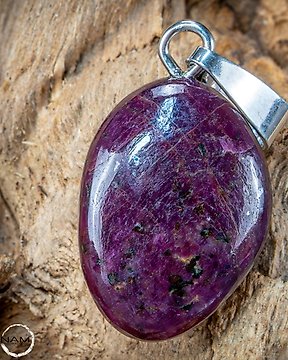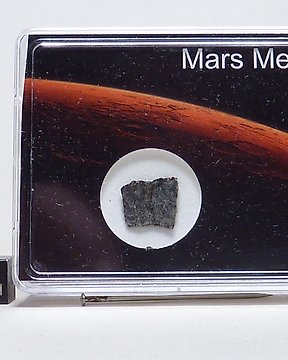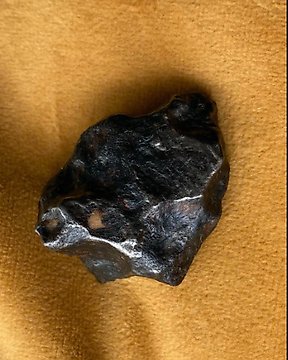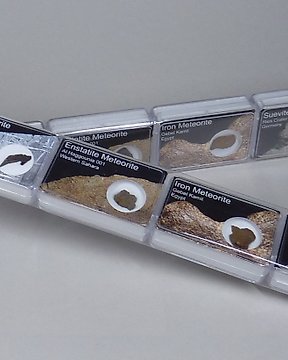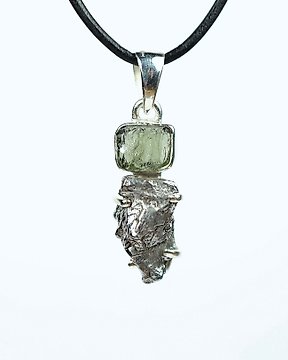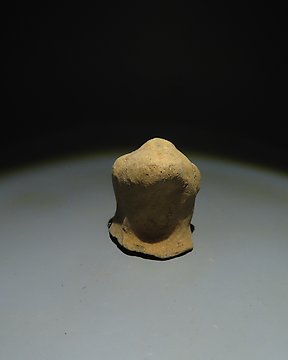Perfecto! :)
Προβολή μετάφρασηςNicoya-Guanacaste, Κόστα Ρίκα Πέτρα Κρεμαστό σε σχήμα πουλιού. 1ος-5ος αιώνας μ.Χ. 5 cm H. Ισπανική άδεια εξαγωγής. (χωρίς τιμή ασφαλείας)
Αρ. 85410477
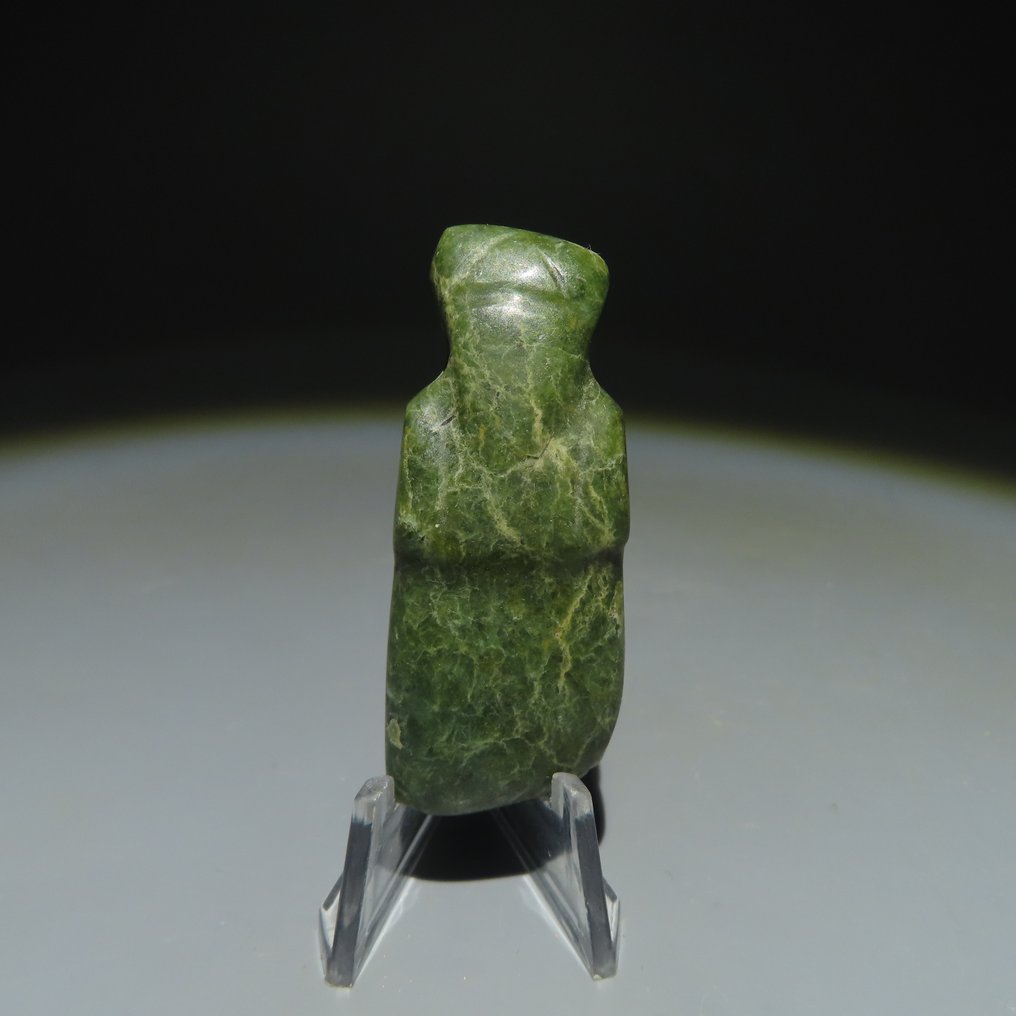

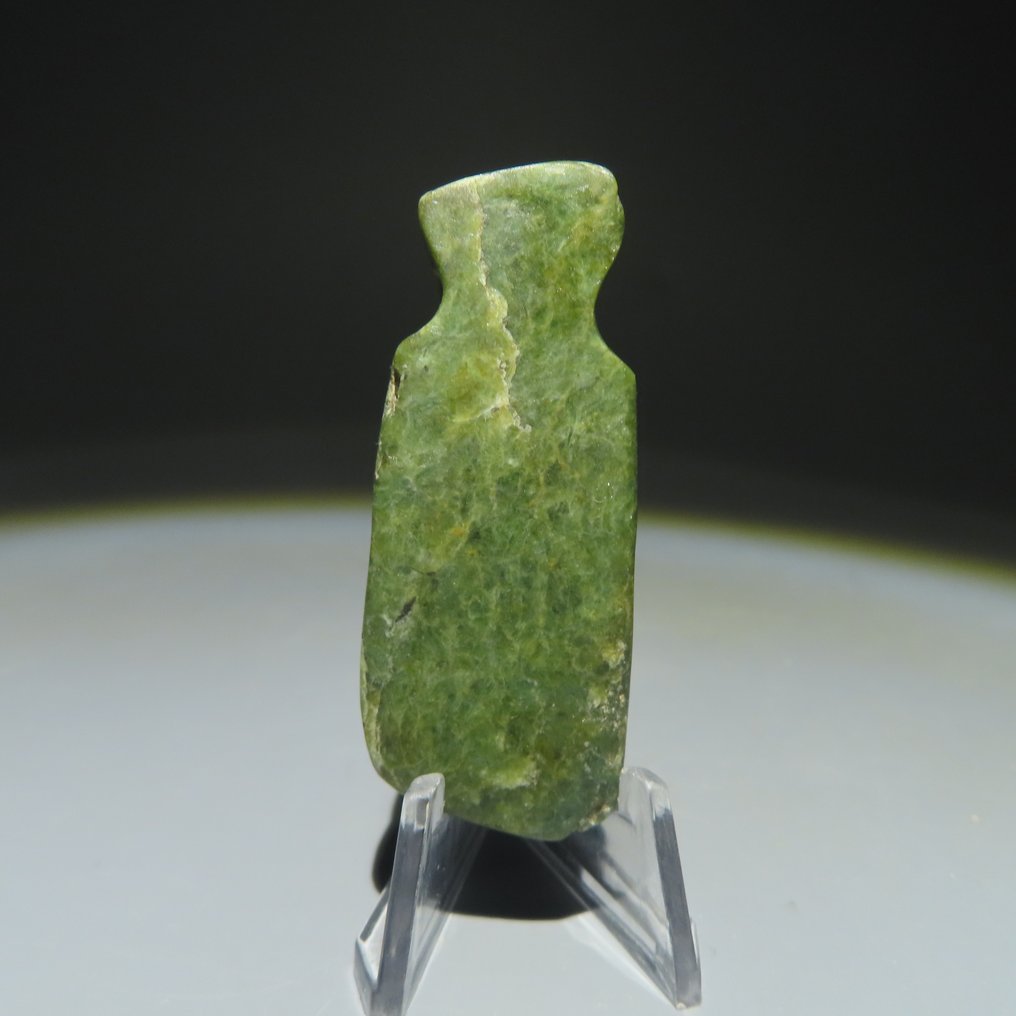
Bird-shaped pendant.
Nicoya-Guanacaste, Costa Rica, 1st-5th century AD.
Jade stone.
5 cm height.
PROVENANCE: Private collection, Paris, France. 1970.
CONDITION: Good condition.
DESCRIPTION:
The Nicoya people lived on the Pacific coast and the Nicoya Peninsula, in what is now northwest Costa Rica. The rocky coastline here has just two bays but is rich in marine animals. The zone also offers wild fruit such as papaya and other resources such as wood and honey.
The Nicoya ceramic style is polychromatic and features the use of incisions and white and/or yellow painted geometric motifs over polished red slip. The most frequent forms are vase-shaped vessels with high, hollow bases, animal-shaped, globular or mammal-shaped vessels, and three-legged plates. Stylized painted jaguar motifs are also featured, as are pipes with a two-headed lizard. Serpents are another animal found frequently in Nicoyan art, especially in relation to fertility cults. The pantheon of Mexican deities is represented in images in red, blue, orange, sepia rose, black and grey paint. Pastillaje was another decorative technique they used. The stone statues the Nicoyans made feature naked men sitting with legs bent, elbows resting on the knees, holding an object near the mouth. The Nicoyan’s monumental sculptures are called “alter ego” because they are supposed to carry part of the individual they represent. These have a human-like form with a mammal or reptile on its back or head. Three-legged grinding stones with a hanging panel that joins the front leg have also been found, with half-human-half-animal figures. The underside of their grinding stones bear decorations that are meant to be visible when the stone is placed against the wall.
The Nicoya culture had its origins in previous cultures that inhabited the same zone, such as the Nicoya-Guanacaste, which mingled with Mexican ethnic groups that migrated after the theocratic empires fell and their land was taken over by military rulers. South American influences can also been seen, mainly in the Nicoyan’s copper work. Around 1500, the Nicoya people came into contact with the first Spanish conquistadors.
Notes:
- The piece includes authenticity certificate.
- The piece includes Spanish Export License.
- The seller guarantees that he acquired this piece according to all national and international laws related to the ownership of cultural property. Provenance statement seen by Catawiki.
Ιστορία πωλητή
Bird-shaped pendant.
Nicoya-Guanacaste, Costa Rica, 1st-5th century AD.
Jade stone.
5 cm height.
PROVENANCE: Private collection, Paris, France. 1970.
CONDITION: Good condition.
DESCRIPTION:
The Nicoya people lived on the Pacific coast and the Nicoya Peninsula, in what is now northwest Costa Rica. The rocky coastline here has just two bays but is rich in marine animals. The zone also offers wild fruit such as papaya and other resources such as wood and honey.
The Nicoya ceramic style is polychromatic and features the use of incisions and white and/or yellow painted geometric motifs over polished red slip. The most frequent forms are vase-shaped vessels with high, hollow bases, animal-shaped, globular or mammal-shaped vessels, and three-legged plates. Stylized painted jaguar motifs are also featured, as are pipes with a two-headed lizard. Serpents are another animal found frequently in Nicoyan art, especially in relation to fertility cults. The pantheon of Mexican deities is represented in images in red, blue, orange, sepia rose, black and grey paint. Pastillaje was another decorative technique they used. The stone statues the Nicoyans made feature naked men sitting with legs bent, elbows resting on the knees, holding an object near the mouth. The Nicoyan’s monumental sculptures are called “alter ego” because they are supposed to carry part of the individual they represent. These have a human-like form with a mammal or reptile on its back or head. Three-legged grinding stones with a hanging panel that joins the front leg have also been found, with half-human-half-animal figures. The underside of their grinding stones bear decorations that are meant to be visible when the stone is placed against the wall.
The Nicoya culture had its origins in previous cultures that inhabited the same zone, such as the Nicoya-Guanacaste, which mingled with Mexican ethnic groups that migrated after the theocratic empires fell and their land was taken over by military rulers. South American influences can also been seen, mainly in the Nicoyan’s copper work. Around 1500, the Nicoya people came into contact with the first Spanish conquistadors.
Notes:
- The piece includes authenticity certificate.
- The piece includes Spanish Export License.
- The seller guarantees that he acquired this piece according to all national and international laws related to the ownership of cultural property. Provenance statement seen by Catawiki.
Ιστορία πωλητή
- 750
- 7
- 0
Wunderbares Stück. Alles wie beschrieben. Hervorragender Kontakt.
Προβολή μετάφρασηςExtremely rapid courrier service from Barcelona to Flanders, picture was nicely and carefully packaged. Muchas gracias!
Προβολή μετάφρασηςVery fine specimen! Thanks.
Προβολή μετάφρασηςgoede foto's, goede omschrijving, goed verpakt en snel verzonden.
Προβολή μετάφρασηςmolto bello tutto ok
Προβολή μετάφρασηςPezzo come da descrizione, davvero notevole. Venditore molto consigliato in quanto gentile e disponibile. spedizione molto veloce. Ottimo!
Προβολή μετάφρασηςVenditore davvero ottimo e gentile. Merce come da descrizione, spedizione veloce. Ottimo l'avere certificato di autenticità.
Προβολή μετάφρασηςUn 100 como empresa un 100 como envío . Empresa muy especial con mucha exquisitez en todos los productos y en personal . Muchas gracias
Προβολή μετάφρασηςAll well! Thanks.
Προβολή μετάφρασηςVery nice and fine cut little jewel! Well packed too! Thanks!
Προβολή μετάφρασηςnice piece and very fast shipping!
Προβολή μετάφρασηςEs una maravilla de moneda, donde se le nota los pasos de los años y me encanta. Servido muy rápido y bien empaquetado. Con su certificación. Qué más se puede pedir?
Προβολή μετάφρασηςSnelle en correcte levering, alleen was de verpakking voor het schilderij niet stevig genoeg.
Προβολή μετάφρασηςHerzlichen Dank!
Προβολή μετάφρασηςAll OK and with very fast shipping.
Προβολή μετάφρασηςPrachtig schilderij. Zo blij mee. Zeer nette verkoper en zeer snelle levering.
Προβολή μετάφρασηςperfect ! very fast and high quality delivery !
Προβολή μετάφρασηςAll well! Thanks.
Προβολή μετάφρασηςVendeur très professionnel, top +++×
Προβολή μετάφρασηςPhotos trop contrastées pour bien percevoir les défauts, mais ces défauts étaient visibles pour autant. Le "Bon état" est trompeur. Sinon, envoi rapide et correctement emballé. Frais de port exagérés.
Προβολή μετάφρασηςGreat communication, delivery and product. Came with a well made certificate of authenticity and good packaging. Overall very happy with the purchase! Delivery is a bit expensive, but I recommend it
Προβολή μετάφρασηςMagnifique témoin du passé, envoyé avec tous les justificatifs, impeccable. Encore une fois très satisfait, un grand merci
Προβολή μετάφρασηςThank you for the Special offer and the fast shipping of this excellent piece of art!
Προβολή μετάφρασης
